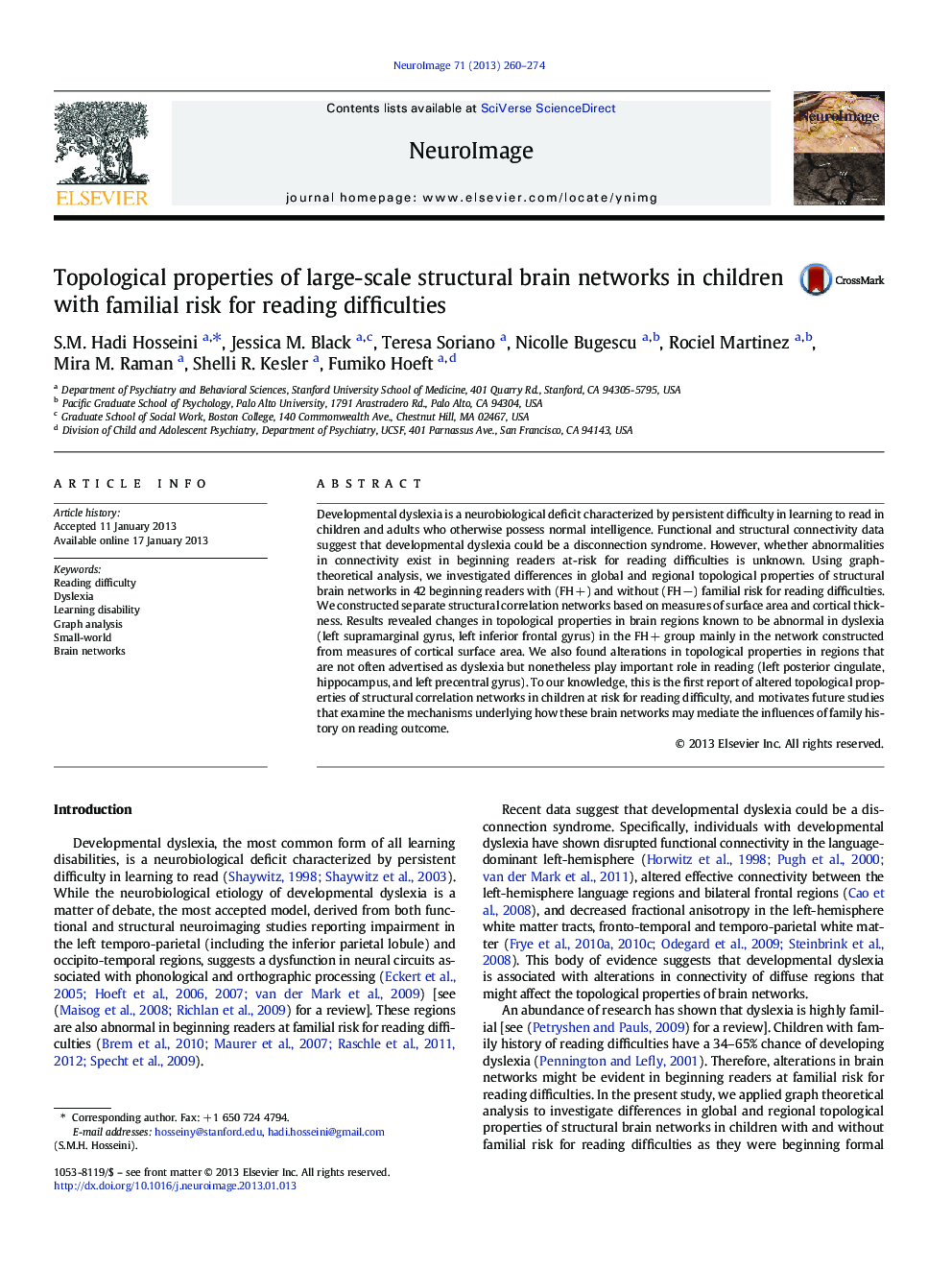| Article ID | Journal | Published Year | Pages | File Type |
|---|---|---|---|---|
| 6029366 | NeuroImage | 2013 | 15 Pages |
Developmental dyslexia is a neurobiological deficit characterized by persistent difficulty in learning to read in children and adults who otherwise possess normal intelligence. Functional and structural connectivity data suggest that developmental dyslexia could be a disconnection syndrome. However, whether abnormalities in connectivity exist in beginning readers at-risk for reading difficulties is unknown. Using graph-theoretical analysis, we investigated differences in global and regional topological properties of structural brain networks in 42 beginning readers with (FHÂ +) and without (FHÂ â) familial risk for reading difficulties. We constructed separate structural correlation networks based on measures of surface area and cortical thickness. Results revealed changes in topological properties in brain regions known to be abnormal in dyslexia (left supramarginal gyrus, left inferior frontal gyrus) in the FHÂ + group mainly in the network constructed from measures of cortical surface area. We also found alterations in topological properties in regions that are not often advertised as dyslexia but nonetheless play important role in reading (left posterior cingulate, hippocampus, and left precentral gyrus). To our knowledge, this is the first report of altered topological properties of structural correlation networks in children at risk for reading difficulty, and motivates future studies that examine the mechanisms underlying how these brain networks may mediate the influences of family history on reading outcome.
⺠Altered topological properties in structural networks of FH + children ⺠Reduced centrality in phonological processing regions in FH + surface area network. ⺠Possible influence of genetic/prenatal factors on FH + surface-area network
